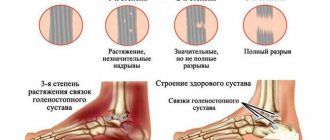Stuttering in children
It is necessary to correct stuttering with frequent sessions with a specialized specialist - a speech therapist. The work is aimed at:
- freeing the baby’s speech from excessive tension;
- elimination of incorrect pronunciation;
- formation of clear articulation, correct and expressive speech.
Speech therapy work is the basic method of therapy around which other methods of correction are built. First, classes are conducted in private with a speech therapist, who teaches the child various techniques for correct pronunciation of individual words, phrases and sounds. Then the exercises go on their own. All acquired skills are reinforced in everyday life, i.e. in communication with parents and peers.
There are several important rules for children who stutter when conducting classes:
- Planning your statement. At the very beginning of work, it is better to avoid improvisations in speech, so as not to provoke speech spasms. When a child knows what he wants to say, he becomes more relaxed and emotional tension goes away.
- Breath. Each pronunciation of a word should occur while exhaling.
- Pauses in speech. A short stop allows you to gain some air while the stutterer can think about what he wants to say next. Pauses can also be used within long sentences.
The correction is carried out by a specialist with sufficient experience. The speech therapist must take into account the individual characteristics of the child, including his age. For preschoolers, exercises should be formulated in a playful way so that they are interesting to children - this way the specialist’s contact with the child is better formed. It is important to clearly plan your classes, trying not to make them long - 20 minutes is enough.
Drug treatment is prescribed by a neurologist if the baby has neurological problems. Among the drugs most often prescribed are muscle relaxants (to relieve muscle spasms) and nootropics that improve cerebral circulation.
It is important to give the child stability so that he feels calm in his environment. You need to play with your baby more often, show him his importance in every possible way, and protect him from all kinds of stress. Only a calm atmosphere will help him cope with this problem.
If you are wondering how to counsel children with stuttering and how to determine the clinical form of stuttering, the severity of stuttering, the location and form of seizures. If you also want to avoid mistakes when correcting stuttering, we are waiting for you at the practical intensive “Stuttering: symptoms, modern methods of correction”!
You will learn:
1. differentiate between iterations and true stuttering;
2. apply massage techniques for stuttering by L.N. Meshcherskaya. and Arkhipova E.F.
3. write a psychological and pedagogical conclusion correctly;
4. recommend the use of a reminder and rules of speech for stuttering and hydrotherapy sessions at home.
Would you like more information about the intensive? Click here!
Possible causes of the disease
Speech neurosis or logoneurosis appears in early childhood, around 3-4 years. The reasons that can provoke it are individual in each case. These may be hereditary or neurological reasons. In adulthood, the prerequisites may be neurological causes - lesions in the brain. This can happen after injuries, stroke, cerebral circulatory disorders, due to complications from a number of infectious diseases.
There are also neurotic factors (psychogenic), which include various mental traumas and imbalances in the nervous system. Neuroses caused by such reasons belong to a complex group that require an individual approach to treatment.
In children, the reasons for the development of logoneurosis are similar. They can all be divided into some groups:
- defects of the central nervous system caused by intrauterine pathologies, birth injuries, diseases at an early age;
- characteristics of the nervous system – increased tearfulness, anxiety;
- features of speech development;
- hereditary characteristics of the central nervous system;
- external pathogenic factors;
- development of speech at a late age;
- physical disabilities in a child that form complexes, feeling like a “black sheep” among other children.
There are also factors associated with the development of stuttering. These include:
- high demands from parents;
- frequent nagging, excessive control, there is no one strategy for raising a child;
- poor emotional contact with adults and peers.
Logoneurosis can be caused by frequent or constant stress, the atmosphere with the family in which the child lives. Frequent reasons are conflicts in the family, kindergarten, etc.
Etiological factors of the disorder
Logoneurosis can appear as a reaction to severe stress. Before a diagnosis of logoneurosis can be made, a specialist must understand what exactly led to it. For children there are three main reasons:
- head injuries, infections, cerebral palsy, brain tumors;
- mental disorders and diseases;
- hereditary factors.
In children, logoneurosis appears many times more often than in adults. If a child is just learning to speak, logoneurosis may be a normal phenomenon during the formation of the speech apparatus. For teenagers, the most common causes of logoneurosis are an unstable psyche, emotional instability, excessive dramatization, and impressionability. One of the most common causes of stuttering is family troubles and conflicts between parents.
Obsessive movement neurosis as a cause of stuttering
A common cause of the development of logoneurosis is obsessive movement. This may include involuntary blinking, tics, coughing, smacking, and others. Parents may not pay attention to this or not notice them at all. In the initial phase of development, the child is practically no different from other children, and parents are confident that this is temporary and will soon go away on its own. Over time, these movements become more and more noticeable to others and they appear more noticeably.
The child is examined by specialized specialists, such as an ophthalmologist or otolaryngologist, who do not see any problems in their field. Nervous tics are excitation of certain parts of the brain. This phenomenon has an instantaneous contraction of the facial muscles that occurs spontaneously and cannot be controlled.
External factors provoking logoneurosis
The development of a child is influenced by the environment in which he grows up - living conditions, environment, correct upbringing. Individual factors include sleep and eating schedules. The child should be in a comfortable environment and not experience mental and physical pressure from other children and adults. Ambient sound stimulation is of particular importance. For example, if the TV is constantly on in the apartment, loud music is playing, the child’s sound perception is disrupted. A small space and lack of fresh air can aggravate this situation.
Spontaneous factors that can lead to emotional and physical stress deserve special attention - accidents, encounters with wild animals, scandals, fights in the family, and others. Children who stutter have a predominance of excitation over inhibition in the functioning of their nervous system. That is, the inhibitory function of the speech apparatus is weakened. Accurate determination of the factor will allow you to select the correct treatment and treatment tactics.
4.Treatment
Currently, there are many effective methods for treating stuttering. The primary task is to normalize the attitude towards the disorder and develop a constructive, cooperative position in the patient himself, as well as in his immediate family. It is equally important to examine and, if necessary, adjust the system of intrafamily relations. Various psychotherapeutic techniques of relaxation, distraction, coping (overcoming) fears and mental blocks, teaching autosuggestive techniques, and desensitization are used. Systems of special speech therapy gymnastics, massage, and breathing have been developed. Sometimes drug support is used (tranquilizers, antispasmodics, antidepressants), in other cases it is not indicated and is inappropriate.
If an organic pathology of the central nervous system is detected, a course of adequate neurological treatment or neurosurgical intervention is prescribed (as indicated).
Today, in most cases, it is possible to achieve a complete cure or at least a radical reduction of logoneurotic symptoms. It is very important to seek help at the initial stage, at the first signs of disturbances in rhythm and fluency of speech, when the disorder has not yet acquired the character of stagnant fixation with a lot of secondary psychological consequences.
Physiological symptoms
The main external sign of the disease is the presence of convulsions during the speech act. The duration of seizures can vary from 0.2 seconds to 90 in the most severe cases. Convulsions are divided according to their form into tonic, clonic and mixed, according to frequency and localization into vocal, respiratory, articulatory and mixed.
When stuttering, patients are usually diagnosed with breathing problems. There are three forms of such violations:
- exciratory (characterized by convulsive exhalation);
- inspiratory (convulsive inhalation);
- respiratory (convulsive inhalation and exhalation).
Violations of speech and general motor skills (tics, speech spasms, myoclonus in the facial muscles) are considered noticeable symptoms of the disease. Patients who have difficulties with pronunciation begin to use various tricks to facilitate speech and hide its shortcomings.
Prevention of logoneuroses
Prevention is measures that can prevent the appearance and development of speech in a child and an adult. Such measures can reduce the risk. There are three types of prevention of logoneurosis:
- prevention of speech disorders in children;
- relapse prevention;
- prevention of problems with the child’s social adaptation.
If the baby is too sensitive, weak, or has an unstable psyche, such measures are especially useful. When the first symptoms appear, the parent should immediately contact speech therapists and neurologists.
Psychological symptoms
The main psychological manifestation of the disease is a feeling of inferiority. The more the patient concentrates on his defect, the more it worsens. There are three degrees of fixation of the patient’s attention on his disease, which differ in the severity of psychological symptoms.
- It is typical for a zero degree of fixation that children do not notice their defect or do not experience disadvantage because of it. In this case, there are no attempts to eliminate the defect, the patient does not feel resentment or embarrassment due to stuttering.
- A moderate degree of fixation is observed in older schoolchildren who are embarrassed by the defect and also try in every possible way to hide it.
- With a pronounced degree of fixation, the child suffers from a feeling of inferiority, concentrates on his own problem and is afraid to communicate with other people.
Recommendations for parents
Treatment of stuttering in children, as well as identification of the causes of speech defects, is carried out by a doctor. But the role of parents in therapy is very important. It is important to behave correctly and follow the following doctor’s recommendations:
- minimizing emotional stress. Avoid aggressive games, listening to loud music, watching TV for long periods of time, or keeping your child at the computer;
- relaxing leisure. Instill in your child a love of classical music and good cartoons, play calm games, read fairy tales, try to get positive emotions and impressions together;
- mode control. Make sure your child gets enough rest and take frequent walks in the fresh air.
A friendly home environment is important at all stages of treatment. It is not recommended to scold the child, shout at him or laugh, or criticize his results if the defect persists at first. It is important to encourage the start of therapy and encourage the baby, encourage him to trust the doctor.
It is very important to maintain a positive atmosphere even after successful correction of stuttering in children. Only in this case can the risk of relapse be minimized.
Phases of pathology development
Phase I
Stuttering with short episodes, shortening the period of smooth speech regularity. Characterized by the following symptoms:
- Difficulty in pronunciation at the beginning of a word and when constructing a sentence.
- Stumbling in speech occurs in the pronunciation of short parts of speech, conjunctions and particles.
- Stuttering occurs as a result of “Communicative pressure” (excitement, a person is in a hurry to say something, etc.).
- There is no speech phobia observed.
II phase
- A chronic form of pathology appears.
- Pronunciation is difficult when speaking quickly and in complex word combinations.
- Awareness of a speech defect, but this does not interfere with normal communication.
III phase
- Obvious convulsive syndrome. But the person does not yet perceive this as a problem.
- Some sounds and syllables cannot be pronounced.
- Speech inhibition, as attempts begin to replace some words with others that are less problematic.
IV phase
- Stuttering develops into a major personal problem. The person understands that he has serious speech impairments and avoids contacts and difficult situations where communication is required. If at earlier stages words and expressions sometimes changed, now this happens all the time.
- Anticipation - a person waits for his speech errors.
- Chronic problem in pronouncing words. Development of fear of communication.
General information
Neurotic stuttering is a psychologically determined form of speech impairment, expressed in a change in its rhythm, the appearance of hesitations and repetitions. Like other types of stuttering, it is associated with tonic and tonic-clonic spasms in the respiratory-vocal and articulatory muscles. The functional nature of neurotic stuttering and its close connection with a traumatic situation make it possible to classify it as a group of neuroses, or neurotic conditions. In this regard, neurotic stuttering in neurology and speech therapy received a second name - logoneurosis.
Logoneurosis most often manifests in childhood. According to some data, short-term stuttering is observed in 4 children out of 100. Children 4-5 years old are most susceptible to stuttering, since during this period the active development of speech function occurs. However, the appearance of neurotic stuttering is possible at almost any age: both during the period of speech formation (2-3 years) and in adults. Boys and men stutter more often than girls and women.
Neurotic stuttering
Complications of the disorder
Possible consequences include:
- Difficulties in communication.
- Problems in personal life and professional activities.
- Difficulties in finding a job, getting an education.
- General delay in intellectual and emotional development.
- Development of an inferiority complex.
- Formation of strong and difficult to eliminate phobias. This is also possible.
And this is only part of the complications. Therefore, it is worth starting treatment as early as possible.










